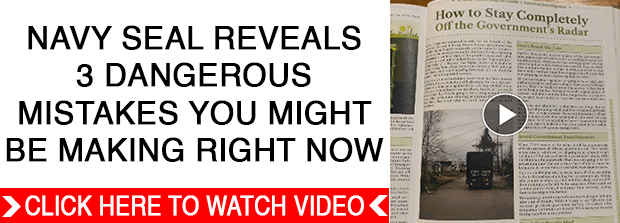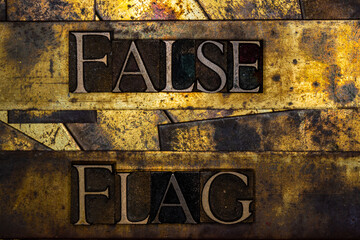Field Reloading – Survivopedia

Disclaimer: Reloading and making reloading components such as priming compound, gunpowder and primers is inherently dangerous. Please reference reloading handbooks, industry best practices, and learn from an experienced and competent reloading instructor. The editor and writer are not liable for the use or misuse of information provided in this article.

Just as growing at least some of the food that you eat achieves a modicum of self-reliance and food security, reloading some of the ammunition that that you shoot provides a hedge against ammunition shortages, unreasonable taxation, or even an outright ban on ammunition sales.
Field reloading differs from reloading on a bench as only a limited amount of equipment and supplies can be carried or cached. By reusing the same brass cartridge cases and molding bullets from scavenged lead, the shooter mainly needs carry powder and primers.
If you would like to have the ability to make your own ammunition because you are concerned about the future availability of ammunition, then you need to learn to reload now while you can still get all the tools and components you’ll need to develop the skillset. If you wait until ammunition is already scarce, it will be too late.
Which Reloading Components are Most Easily Scavenged or Scrounged?
Cartridges are comprised of the following principal parts:
- The cartridge case, which is usually, but not always made of brass.
- The primer. In the case of rimfire ammunition, the primer is integrated into the rim of the base of the cartridge case. In the case of centerfire ammunition, the primer is a separate part that is seated into the primer pocket, which is machined into the base of the cartridge case. The primer contains primary explosive material that ignites when struck, igniting the powder charge.
- Gunpowder or propellant is a deflagrant, a chemical mixture that burns rapidly, creating expanding gases in the process. Under pressure, these gases propel the bullet down the barrel.
- The bullet, shot, or slug, which is usually, but not always made of lead, and often jacketed or plated with copper. The bullet is the projectile that exits the barrel and impacts the target.
Cartridge Cases
Quality centerfire brass cases can be reloaded multiple times. Once your brass cases begin to wear, you will need to replace them. In the western USA, at least, it is not too hard to find once-fired brass cases. Just look for the first places to shoot out of town on national forest or BLM land. Refurbishing spent cartridge cases is easier and requires much less equipment than manufacturing new ones. Manufacturing new cases is not practical in the field.
I grew up in Arizona and my stepfather was an archaeologist. When we examined historical battle sites between the US Army and the Apache, we could tell which side occupied each position by the caliber of the spent cases and whether or not they had been crushed. US Cavalry would stomp their ejected cases with their boot heel so they couldn’t be reloaded by the enemy.
Primers
Primers are usually sold either by the hundred or by the thousand, depending on the type of primer. Primers can be removed from spent cartridges, refurbished, reloaded and reused. They can also be made at home using a kit or from scratch.
The simplest solution is to carry and cache your primers, since they are so small and light.
Reusing spent factory primers is simpler than making new ones from scratch, so most people start with that. Primers are removed from fired brass, cleaned, prepared and re-primed. The indentation made by the firing pin is hammered flat using a punch and anvil.
Making your own primer cups is another option. The Sharpshooter Reloader Company, the same company that produces the rimfire reloader kit, manufactured a tool to make centerfire primer caps from aluminum roof or valley flashing to address the primer shortage. This tool is essentially a spring-loaded die designed to be used with an arbor press but can be used with a hand press. Aluminum is cut into 1” strips, which are advanced through a slot in the tool. The arbor press is used to strike a cap, pressure is released on the handle, and the strip is advanced to strike another primer cap.
The caps can then be primed using their Prime-All 2.0 Centerfire kit. This involves mixing included components, filling the primer cup 1/3 of the way full and adding a drop of hardener/preserving liquid, and letting it dry. Percussion caps can be made using a similar tool and process and other companies, such as the recoilstore.com, now make similar dies for both large and small primers.
Aardvark Reloading is also a great resource for making homemade primers. Their website has detailed instructions on all aspects of making primers on your own.
Powder
One pound of gunpowder will reload approximately 1,700 rounds of 9x19mm, so it’s generally better to carry powder with you and stockpile or cache additional powder for when it is needed.
Black powder is relatively straightforward to make from scratch, but it is very dirty and makes a big cloud of smoke, when fired, revealing the position of the shooter. Some survivalists reload brass shotgun shells and use single-shot shotguns like early single-shot breach-loading rifles. I like the self-reliant aspect of this method.
Gas Checks
Gas checks are used with unjacketed bullets in high pressure loads. They help prevent lead build up in the barrel and improve accuracy. Gas checks can be made from ductile metals (such as copper, zinc, aluminum and brass). The same metal used for your primers may also work for your gas check. Gas checks are made with a gas check die.
Bullets
Lead is infinitely recyclable. The Lewis & Clark Expedition carried their gunpowder in lead tins. When the tins were emptied, they cut them down, melted the lead and molded ammunition.
Today, some 90% of reclaimed lead comes from lead-acid batteries. 85% of these are car batteries. (Recycling, 2018) Unfortunately, it is heavily contaminated and the process for recycling lead from lead-acid batteries is best left to commercial enterprises. The good news is that you don’t need all that much lead, so you can cache finished bullets, shot, slugs, or lead ingots.
If you are reduced to scavenging, other sources include tire weights, bullets dug out of shooting ranges, old fishing weights, dental x-ray backing, lead sheathing used in old homes for roofing, water heater pans, pipes, roof sheathing, and other uses.
To cast lead bullets, you will need:
- Crucible & Lead Ladle – The crucible is the vessel that hold the lead. The ladle is like a spoon and is used to transfer lead from the crucible to the cavities of the bullet mold.
- Mold Handles – Mold handles are like pliers and are used to secure the mold. Mountain men Thomas Long “Peg-Leg” Smith and William Sublette used a pair of bullet mold handles to remove a piece of bone from the former’s leg after it was shattered by a brave’s musket ball.(Humphries, 1968)
- Bullet Mold – Lee molds come with 6 or 18 cavities.
- Bullet Lube – Can be purchased or made with beeswax and graphite.
- Bullet Sizing Die or Kit – Used to precisely size the cast bullet.
Field Reloading Kits
The first breech loading firearms (firearms that used cartridges) came with a simple set of tools to reload ammunition. Using a field reloading kit is the easiest and safest way to reload ammunition in the field Examples include:
Classic Lee Loader Kit
As I write this, a classic Lee Loader kit is still less than $50, not much more than a box of ammunition. Depending on the caliber, it may be less than a box of ammo.
With this kit, your reloading components and a small hammer/mallet, you have everything you need to do a little low volume reloading. It comes with a tool to seat the primer in the case, a powder measure to charge the case, and a seating tool that you tap with a hammer to seat the bullet. It also comes with a decapping pin and chamber to get the spent primer out of a fired cartridge case, so it can be reloaded. (Lee Precision, Classic Lee Loader, 2025)
You will surely add some tools for case preparation, but if you carry all the components, you can use this little kit to reload in your camp while hunting or backpacking.
Sharp Shooter Rimfire Reloader Kits
These kits are great for survivalists. They enable you to reload either .22LR or .22WMR rimfire cartridges. The main tool is a crimper/2-cavity bullet mold. It also comes with a rim cleaner, rim packer, powder measure, powder funnel, eye dropper (for the priming mixture), and instructions. You aren’t going to be setting any speed records with a 2-cavity bullet mold, but you could always cast your bullets with a larger mold. You just basically don’t worry about the dent made when the bullet was last fired. Chances you are going to hit the exact same spot are pretty low … at least the second go round.
The rim cleaner is used to scrape the spent primer residue out of the cartridge case. The case is reprimed with priming compound sold by Sharp Shooter.
Alternatively, you can make your own or improvise it from the tips of the heads of strike anywhere matches, however potassium chlorate-based priming compound is corrosive, so you’ll need to clean your firearm after each shooting session. The match tip material is pulverized into fine powder, in very small batches, for safety. This powder is then wet with acetone, packed into the cartridge rim, and allowed to dry.
After the priming compound is dry, powder is added and a bullet is cast, seated, and crimped into place. (Reloader, 2025)
Lee Breach Lock Hand Press
An alternative is to build a reloading kit based on Lee’s Breach Lock Hand Press, which you can think of as a portable reloading press that is held in your hands instead of attached to a bench. This type of kit will give you options in exchange for added weight. (Lee Precision, Breech Lock Hand Presses, 2025)
Vintage Eureka Shotshell Loader
Another option is to build a field reloading kit off a vintage field reloader like the shotshell reloaders made by Eureka. Since shotgun shells are loaded with shot instead of a seated bullet, they have slightly different components, which are the wadding, and the shot charge. Plastic hulled shells are crimped closed and brass shells are typically sealed with a cardstock disc, which is glued in place. The disc and primer pocket can also be lacquered if water-resistance is desired as with waterfowl and military ammunition.
Summary
If you haven’t started reloading, I hope that you do and that you share information on reloading with other patriots and mentor them as they develop the skills they will need. As far as ammunition is concerned, reloading is the path to independence. Oppressive elements within governments may be able to limit many things, but they cannot remove knowledge from your mind.

Read the full article here









